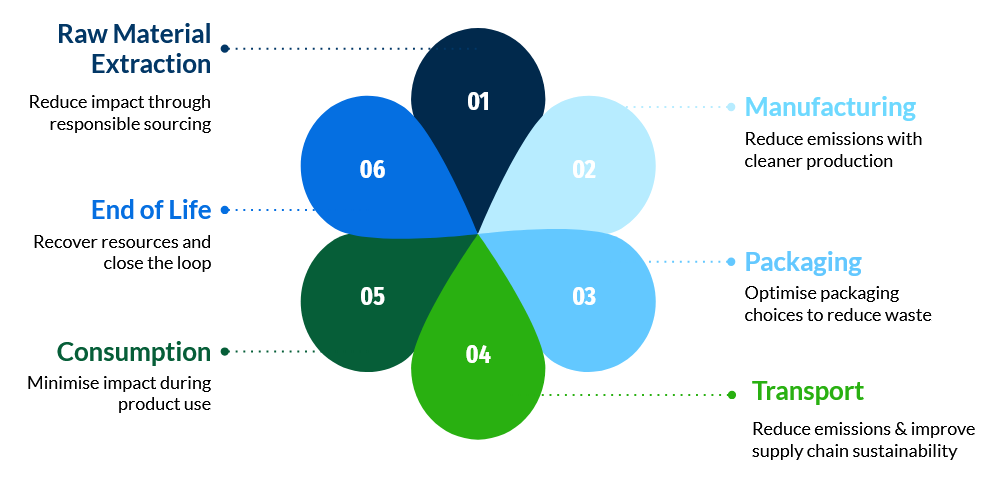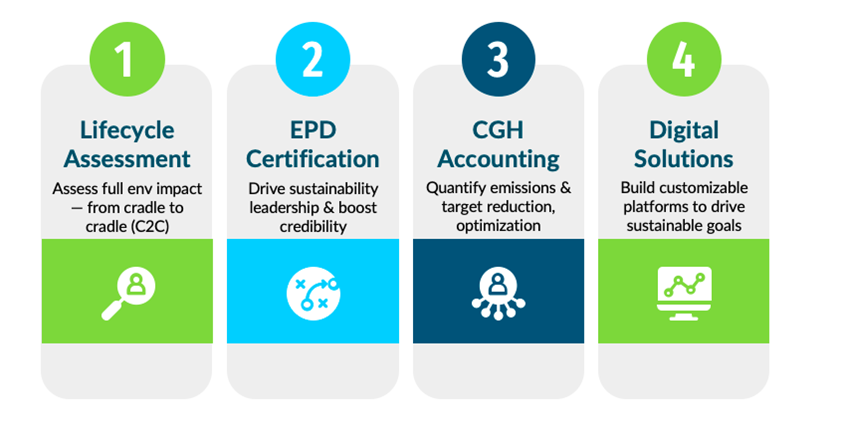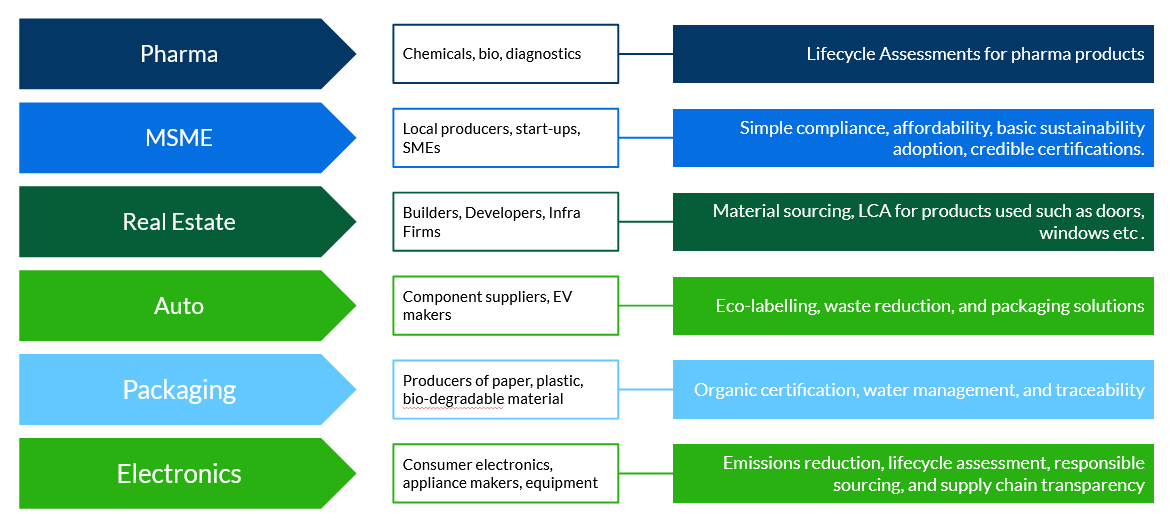With increasing global focus on climate change, resource conservation, and regulatory compliance, Environmental Product Declaration has become indispensable communication tool. EPD Consultants help manufacturers and suppliers transparently disclose environmental impacts, enabling architects, engineers, procurement specialists, and consumers to make informed, sustainable decisions paving the way for a greener, more circular economy.
An EPD is a verified, standardized document that quantifies a product’s environmental impacts throughout its entire life cycle from raw material extraction to end-of-life disposal; giving manufacturers, buyers, and stakeholders transparent and reliable data essential for informed decision-making in today’s sustainability-driven marketplace. EPD Environmental Product Declaration follow internationally recognized standards (like ISO 14025 and EN 15804) and are based on rigorous life cycle assessments (LCA) system, providing objective and comparable data of a product or services for businesses, specifiers, and consumers around the world.
Why are EPD Consultants Important?
EPDs are critical for manufacturers and suppliers aiming to succeed in sustainability-driven markets. EPD Consultants helps:
- Market Access & Competitiveness - More governments and organizations require EPDs for tender participation and green-certified projects.
- Data-Driven Insights - Identify hotspots for reducing emissions, waste, and costs.
- Customer Trust - Transparency builds stronger brand loyalty and credibility.
- Green Building Compliance - EPDs contribute to credits in LEED, BREEAM, IGBC, and other rating systems.
- Sustainability Reporting - Supports ESG disclosures and corporate responsibility reports.
- Eco Vadis - An EPD and LCA can help to improve the ESG rating of your company such as Eco Vadis.
- Support Innovation and Sustainable Decision Making - Manufacturers rely on the insights gained from life cycle assessments to improve efficiency, reduce carbon footprint, help in raw material selection and design optimization, reduce costs, and invent more sustainable offerings.
Track and reduce your product’s footprint at every stage of its life cycle

How Does an EPD Environmental Product Declaration Work?
EPDs are developed through comprehensive life cycle assessments carried out by experts, quantifying all upstream and downstream impacts over several stages:
Raw Material Acquisition: Extraction, transport, and processing.
Manufacturing: Production processes, energy consumption, emissions.
Distribution: Packaging, delivery to customers.
Installation & Use: How the product performs in its intended environment.
End-of-Life: Disposal, recycling, or reuse options.
Once the LCA is complete, findings are third-party verified and structured into a clear report. Users of the EPD Environmental Product Declaration gain insight into each stage’s specific impacts, along with assumptions and boundary conditions to ensure transparency and comparability.

Sustain and Save boast an expert team of EPD Consultants with extensive experience in LCA Services for over 150+ products. We collaborate with companies across various sectors, including manufacturing, automobiles, pharmacy, and more. Sustain and Save is a premier environmental consultancy firm fostering sustainable practices in built environment and providing services like Green Building Certification, Life Cycle Analysis, Environmental Product Declaration and Carbon Footprint Analysis.
We accelerate your sustainability success by delivering profitability, performance, and purpose across: PRODUCTS by driving better lifecycle outcomes with trusted data, circular design, and smart materials.
Life Cycle Assessment (LCA)
- Comprehensive cradle-to-grave and cradle-to-gate assessments
- Identification of carbon emission hotspots across your value chain
- Recommendations to reduce product environmental footprint.
- LCA reports aligned with ISO 14040 & ISO 14044 standards
- Support in integrating LCA results into corporate sustainability strategies
- We have partnered with top verifiers in the industry to provide verified LCA results.
Key Features of Life Cycle Assessment (LCA)
Lifetime Perspective: Life Cycle Assessment LCA considers all life stages of a product or building, capturing complete environmental impacts rather than just one phase.
Holistic Evaluation: It assesses multiple environmental impact categories including greenhouse gas emissions, resource depletion, ozone layer depletion, human toxicity, eutrophication, and more.
Standardized Framework: Based on international standards ISO 14040 and ISO 14044, the methodology ensures reliability, transparency, and comparability of results.

Phases of Life Cycle Assessment (LCA)
1. Goal and Scope Definition: Clarifies the purpose, system boundaries, functional unit, and data quality requirements.
2. Inventory Analysis (LCI): Compiles data on energy, material inputs, and emissions in all relevant life stages.
3. Impact Assessment (LCIA): Translates inventory data into potential environmental impacts grouped by categories like climate change and human health.
4. Interpretation: Analyses result to draw conclusions, identify hotspots, and support decision making for environmental improvement.
Common Types of LCA by Life Cycle Scope
Cradle-to-Grave: The most comprehensive type, evaluating environmental impacts from the extraction of raw materials (cradle) through manufacturing, use, and final disposal or recycling (grave). It covers the full life cycle.
Cradle-to-Gate: Partial LCA assessing impacts from raw material extraction (cradle) to the factory gate before the product is transported to the consumer. It excludes use and disposal phases. Often used for Environmental Product Declaration (EPD).
In summary, LCA is a critical tool for understanding and mitigating the environmental impacts associated with buildings and products across their whole life cycle, supporting holistic sustainability goals.
Our EPD Consultants help organizations measure, understand, and communicate their environmental impact through internationally recognized EPD Environmental Product Declaration and comprehensive LCAs. Our goal is to empower your business to reduce carbon footprints, optimize resources, and showcase transparency — all while gaining a strong competitive advantage.
